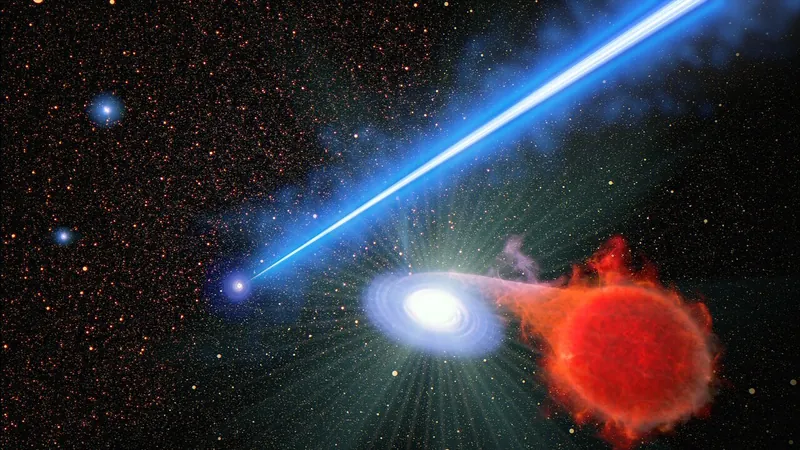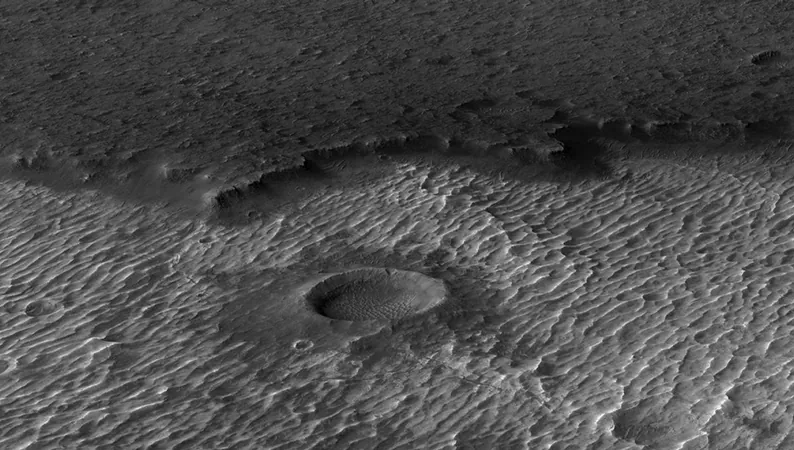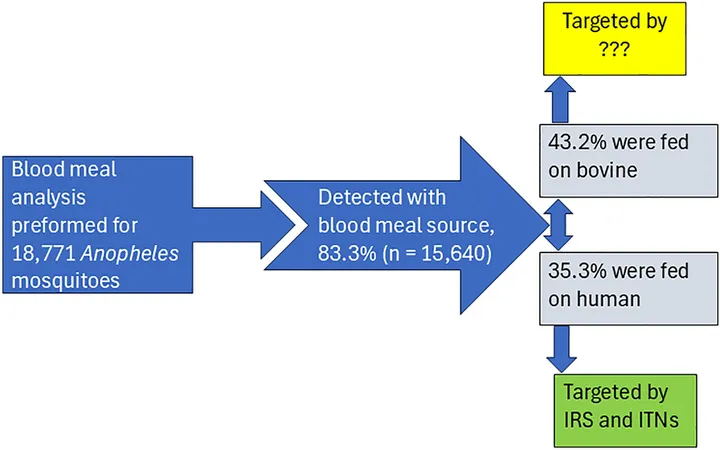
Astonishing Discovery: Hubble Reveals Black Hole Jets Trigger Stellar Explosions!
2024-09-26
Astonishing Discovery: Hubble Reveals Black Hole Jets Trigger Stellar Explosions!
In a groundbreaking revelation, astronomers utilizing the NASA/ESA Hubble Space Telescope have stumbled upon a phenomenal link between a supermassive black hole's jet and the eruption of stars in its vicinity, igniting a flurry of excitement within the astronomical community. The black hole at the core of the massive galaxy M87 appears to unleash a blowtorch-like jet that not only obliterates everything in its direct path but also influences star activity in the surrounding area, leading to a noticeable increase in novae occurrences.
This startling research has been cataloged on the arXiv preprint server, prompting discussions among leading scientists. "The implications of this discovery are enormous," stated Alec Lessing, the study's lead author from Stanford University. "We find ourselves questioning our current understanding of how black hole jets interact with nearby stellar systems."
But what exactly are novae? These spectacular stellar phenomena occur in binary star systems where an aging, expanded star transfers hydrogen onto a companion white dwarf. When the dwarf collects enough hydrogen—a layer that's potentially a mile deep—this material detonates in a powerful explosion, resembling a cosmic nuclear bomb. Luckily, the white dwarf survives to siphon more fuel from its companion, continuing the cycle of eruptions.
Interestingly, Hubble’s observations revealed that novae were happening at a rate double that of other areas within M87, sparking inquiries about the factors influencing this pattern. The black hole at the core contains a staggering mass equivalent to 6.5 billion suns and is encircled by a swirling disk of matter. It ejects a jet of plasma stretching 3,000 light-years, hurtling through the universe at nearly light speed. Anything caught in its fierce flow would be incinerated, however, the newfound findings suggest that even proximity to this extreme outflow brings substantial risks for nearby star systems.
Researchers speculate multiple hypotheses for the jets' influence on nova activity. "The jet possibly facilitates hydrogen accumulation onto the white dwarfs, leading to more frequent eruptions," Lessing posited. Alternatively, it may be the energetic light pressure from the jet that's affecting the systems. "We've observed that increased hydrogen delivery could accelerate the eruption cycle."
Moreover, the team surmised that the heat from the jet could potentially be causing the companion stars to overflow with hydrogen, yet calculations suggested that the heating is not sufficiently intense to account for the increased nova activity.
As co-investigator Michael Shara from the American Museum of Natural History mentioned, "We’re not the first to note increased activity around the M87 jet, but Hubble provides unprecedented evidence, offering a larger data pool that confirms our hypothesis with clarity."
Hubble's journey began back in 1990, and right from its first images of the M87 core, it captured unusual events hinting at erupting novae. However, previous analyses were limited due to the narrow view of the telescope's early instruments. Now, with modern wider-view cameras, the team revisited M87 every five days to meticulously tally the novae, resulting in the most detailed images of this galaxy's core to date.
In total, Hubble identified 94 novae in the part of M87 its camera could examine. "The evidence was clear—we did not need complex statistics," exclaimed Shara, underscoring that they recognized the anomaly visually.
Chiara Circosta, an ESA Research Fellow studying black holes, remarked, "This discovery is surprising and helps deepen our understanding of how black hole jets might influence star formation and behavior in galaxies."
The distinct capability of Hubble is crucial, as ground-based telescopes lack the clarity required to discern novae within the bustling background of M87. With a new nova erupting in M87 approximately every day, and considering the vastness of the universe with its 100 billion galaxies, millions of novae likely explode every second in various cosmic locales.
This riveting discovery opens avenues for further research, challenging scientists to re-evaluate theories about black hole dynamics and their profound impact on star formation within galaxies. What other secrets about our universe await unraveling? Stay tuned!




 Brasil (PT)
Brasil (PT)
 Canada (EN)
Canada (EN)
 Chile (ES)
Chile (ES)
 España (ES)
España (ES)
 France (FR)
France (FR)
 Hong Kong (EN)
Hong Kong (EN)
 Italia (IT)
Italia (IT)
 日本 (JA)
日本 (JA)
 Magyarország (HU)
Magyarország (HU)
 Norge (NO)
Norge (NO)
 Polska (PL)
Polska (PL)
 Schweiz (DE)
Schweiz (DE)
 Singapore (EN)
Singapore (EN)
 Sverige (SV)
Sverige (SV)
 Suomi (FI)
Suomi (FI)
 Türkiye (TR)
Türkiye (TR)